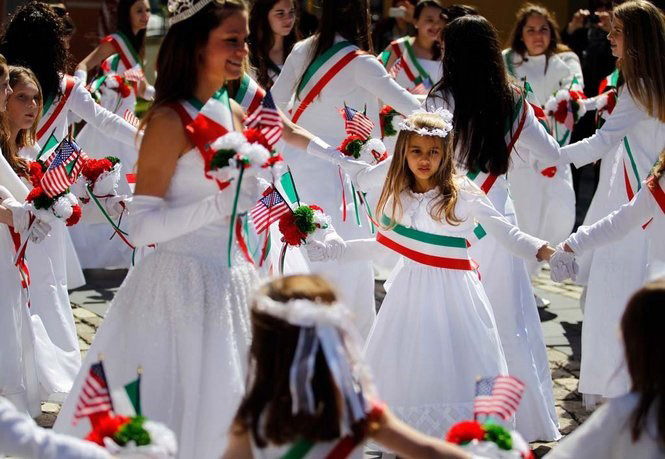On March 19, the Feast of St. Joseph is celebrated by Catholics world-wide. In Italy and especially Sicily, the roots of this day go back to the middle ages and the beloved step-father of Jesus is honored with an age-old tradition called Tavola di San Giuseppe.
How did the tradition begin? Following a terrible drought in Sicily, the harvest was ruined and a drought ensued. Fearing the worst for their families and villages, countless Sicilians prayed to Saint Joseph to intercede. The prayers to the Patron Saint of fathers, carpenters and Sicily were answered when the rains came and the drought receded. To thank and honor St. Joseph, the wealthier villagers created a great feast of meatless foods (since it was during Lent) for all to enjoy, but especially the poor. In the finest Italian heritage, homage to St. Joseph continues in the form of food and celebration. In some villages, the people also hold a great public play and procession. Over the years many different types of foods have joined the traditional ones at the St. Joseph’s tables or altars and all are brought in with the theme of bountiful food for all.
At a traditional Tavola di San Giuseppe, the food is brought by parishioners. Everyone in attendance should sample at least one dish that has bread, since it is a symbol of luck and at least one dish that has fava beans – the symbol of health, which is strongly tied to the Feast Day. Originally, the fava bean had a poor reputation among foods. It was most commonly used as animal feed, leading to such alternate informal names “horse beans” and “pigeon beans.” The rise in stature of the fava bean began during the famine in Sicily. Perhaps inspired by St. Joseph, farmers in Sicily had their wives prepare the fava beans for the table. This ingenuity helped to save many from starvation and since then, the beans have been considered to be lucky. The bean is also a symbol of fertility since it grows well even in poor, rocky soil. Italian farmers would carry a bean from a good crop to ensure a good crop the following year. When dried, roasted and blessed, it becomes the very popular “lucky bean.” Legend has it that you will never be penniless as long as you carry one. Some people believe that if you keep one in the pantry, there will always be food in the kitchen.
On the St. Joseph’s Day Altar, it is customary to place candles, flowers and wine, along with lemons and limes, fava beans, cakes, breads, cookies and zeppoles (a lesser-known fact is that St. Joseph is the patron saint of pastry chefs). Foods are traditionally served containing bread crumbs to represent saw dust, since St. Joseph was a carpenter. Traditionally, no meat is allowed on the celebration table, so seafood dishes are served – shrimp, calamari and sardines being predominant. The altar usually has three tiers to represent the Holy Trinity.
Just before the feasting begins, there will be a cry of “Viva la tavola di San Giuse!” an expression repeated throughout the day. When the eating is done, the St. Joseph’s Altar is smashed and three children dressed as the Holy Family will knock on three doors asking for shelter. They will be refused at the first two and welcomed at the third, in memory of the Holy Family’s seeking of hospitality just before Christ was born. This re-enactment is called Tupa Tupa, meaning “Knock Knock.”
At the end of the day everyone takes home a bag filled with bread or pastries, a medal of St. Joseph and a blessed fava bean. Lemons, like fava beans, are reputed to bring good luck. One of the most curious customs is for a woman who is seeking a husband to inconspicuously take a lemon from the altar, since it will help them to find a husband.
Although there are large St. Joseph’s Day festivals in the Italian American communities in cities such as New York, Chicago and Boston, the largest is undoubtedly in New Orleans. This was a major port of entry for Sicilian immigrants during the late 19th century. At the time, the French Quarter was even nicknamed “Little Palermo.” The Feast of St. Joseph is a city-wide event. Both public and private St. Joseph’s Altars are traditionally built and usually open to any visitor who wishes to pay homage. In keeping with the spirit of generosity of the day, the food is distributed to charity after the altar is dismantled.
There are also parades in honor of St. Joseph among the Italian population of New Orleans, similar to the many marching clubs and truck parades of Mardi Gras. Tradition in New Orleans also holds that when selling your house, bury a small statue of St. Joseph upside down in the front yard and that house will sell more promptly. St. Joseph’s Day is also the day when the swallows are traditionally believed to return to Mission San Juan Capistrano after having flown south for the winter.





